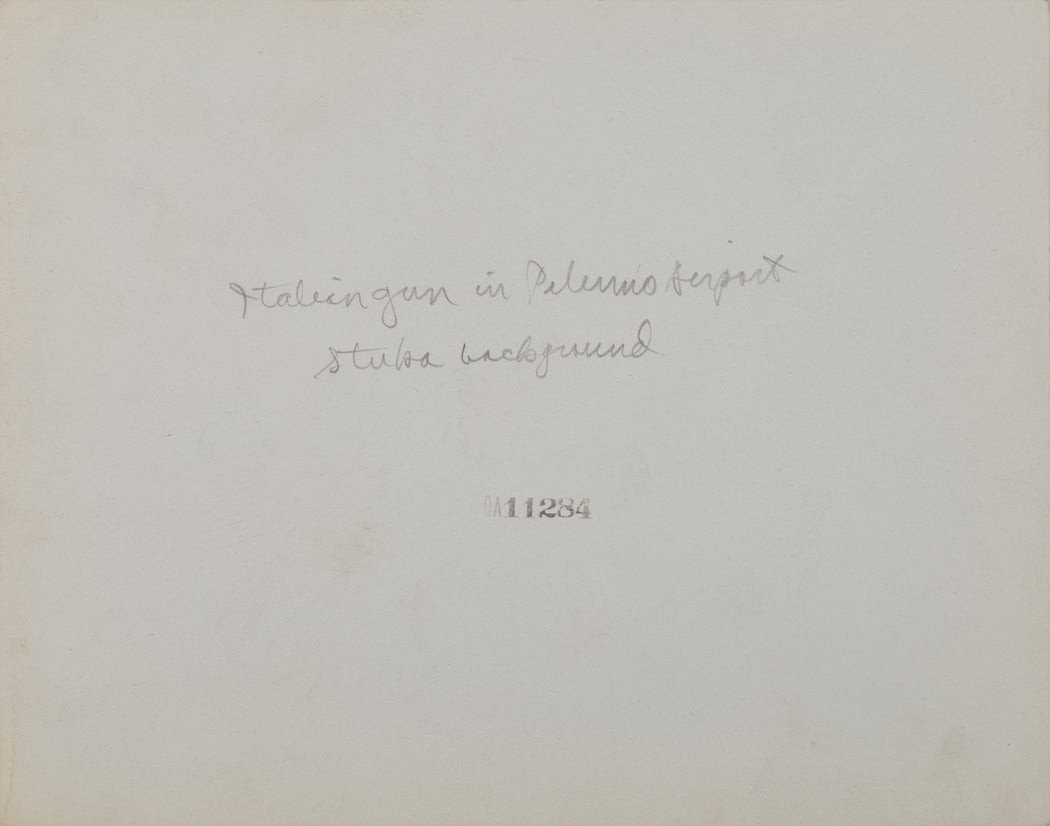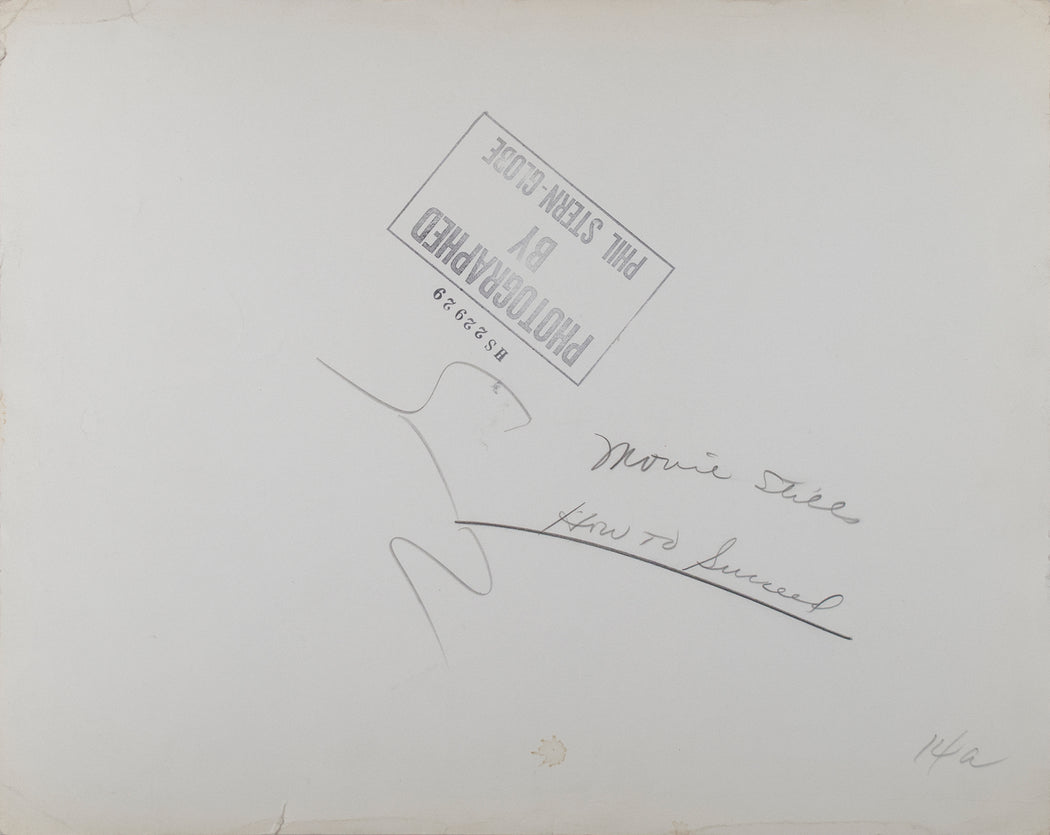








Phil Stern
Phil Stern's Hollywood Photographs 1940s-1990 by Phil Stern
 Toronto, ON)
Toronto, ON)
Learn about our Shipping & Returns policy.
Have a question? Read our FAQ.
- Artwork Info
- About the Artist
-
Set of 38 Gelatin silver prints housed in a cotton-bound portfolio
Some prints annotated, stamped, or titled
Individual print dates varyShown with this listing is a sampling of the portfolio's contents.
View the entire portfolio as a PDF document. -
Phil Stern was a celebrated photographer whose images caught the horrors of war, the bittersweet joys of a doomed president’s inaugural ball and the intimate moments of jazz greats and Hollywood stars just being themselves.
Mr. Stern always attributed his success to being in the right place at the right time, and in a way, that was so. But it also meant running through German tank crossfire the day he was cut down by shrapnel. It meant hovering near a beaming John F. Kennedy 1,036 days before the assassin’s bullets struck. And it meant watching Sinatra and Bogie, James Dean and Marilyn Monroe for days on end to find the fleeting moments of truth.
With patience, an eye for the enduring image and sometimes courage under fire, Mr. Stern was a World War II combat cameraman, lugging an old Speed Graphic across North Africa and Italy, and, for decades after the war, one of Hollywood’s most influential freelancers, working mainly for Life magazine and given nearly unlimited access to studio sets and the parties, jam sessions and retreats of the stars.
Many of his most famous shots were made on location: Marlon Brando in black motorcycle jacket and boots, swaggering through a dusty town terrorized by bikers in “The Wild One” (1953); Bette Davis and Joan Crawford, decaying under their makeup, separated by a blond doll in “What Ever Happened to Baby Jane?” (1962); a hairy-legged Jack Lemmon in high heels for “Some Like It Hot” (1959).But Mr. Stern caught some of his most endearing images in private: an aging Humphrey Bogart looking uneasy on a child’s swing with his little daughter; Anita Ekberg arranging her cleavage; James Dean’s brooding eyes emerging from the neck of a pullover; John Wayne in a skintight gingham bathing suit and espadrilles; Monroe in a black cloak blown open by the wind, revealing her in a white dress and displaying a pregnancy that would not come to term.
“I was never interested in the glamour,” Mr. Stern told Entertainment Weekly in 1993. “I was interested in the tears and agony behind it.”
Besides Life, his work ran in Look, Collier’s and The Saturday Evening Post, as well as celebrity photo magazines of the day, including Photoplay. He also created album covers for Frank Sinatra, Louis Armstrong, Ella Fitzgerald, Art Tatum and Billie Holiday, and for Verve, Pablo and other labels of the jazz impresario Norman Granz.
On Jan. 20, 1961, Mr. Stern was the official photographer for Kennedy’s presidential inaugural gala. Racing around Washington to five white-tie balls, he snapped memorable images, including Sinatra’s lighting the triumphant president’s cigarette. Many of the scenes of gaiety would become more poignant after Kennedy’s assassination on Nov. 22, 1963.
Philip Stern was born in Philadelphia on Sept. 3, 1919, one of three sons of Jewish immigrants from Russia, Alix and May Stern. His father, a salesman, moved the family to the Bronx when Philip was 11.
He began his career at 18, working days as a photoengraver’s apprentice and nights as a photographer for The Police Gazette in New York. In 1938, he was hired by Friday magazine and moved to Los Angeles, where he began taking pictures of Hollywood personalities.
When World War II began, he enlisted in the Army and was assigned to a photographic unit as a darkroom technician in London. He volunteered for duty with the American commando unit known as Darby’s Rangers, which went into action in North Africa in 1943, and photographed numerous battles against German tank and infantry forces before being wounded at El Guettar, Tunisia.
He later joined the armed forces newspaper Stars and Stripes and photographed American forces landing on the southern coast of Sicily, and atop a tank in the captured town of Comiso, rolling through streets lined with waving inhabitants. He also joined the campaign in Italy.
After the war, Mr. Stern resumed freelance work in Los Angeles. Many of his pictures were reproduced in “Life: The First Decade, 1936-1945,” the magazine’s retrospective of 200 black-and-white images by Margaret Bourke-White, Ansel Adams, Berenice Abbott, Walker Evans and others, recording the bleak hopes of the Depression and the exhilarations and sorrows of the war years.
One was Mr. Stern’s classic 1945 portrait of a man who has lost his wartime job at a New York shipyard. A thrusting chin, a dangling cigarette: He is at the wheel of a car with his daughter and wife beside him, heading home to Tennessee. The faces are worn but stoic, old before their time, looking through the windshield at an uncertain future.
In 1945, Mr. Stern married Rosemae Lindou. They had four children, Tom, Peter, Lata and Phil. He is survived by his sons Tom and Peter, and eight grandchildren.
Besides his Hollywood freelance work, Mr. Stern shot studio publicity stills and poster pictures for more than 200 films. His photographs were displayed at galleries and museums and collected in books, including “Phil Stern’s Hollywood: Photographs, 1940-1979” (1993) and “Phil Stern: A Life’s Work” (2003). Many of his pictures are displayed online at philsternarchives.com.
In 2001, he donated his library of Hollywood photographs to the Academy of Motion Picture Arts and Sciences. His subjects included Judy Garland, Robert Mitchum, Montgomery Clift, Sammy Davis Jr., Dean Martin, Alfred Hitchcock, Orson Welles, Marlene Dietrich, Count Basie, Dizzy Gillespie, Sarah Vaughn, Stan Getz, Oscar Peterson, Lester Young, Jane Russell, Jean Simmons and many others.
Mr. Stern told Discover Hollywood in 1999 that he had spent a lifetime searching for what he called the perfect image. “You know what it is, but you just can’t get it,” he said. “Still, you keep searching. I haven’t found it yet.”
Adapted from The New York Times




![Untitled [Two women at midway]](http://ffoto.com/cdn/shop/products/Freedman_Untitled_Twowomenatmidway__circa1972_512x.jpg?v=1647967873)

